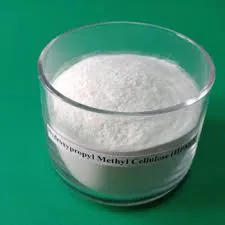
Nov . 10, 2024 13:34 Back to list
Exploring the Applications and Benefits of Hydroxypropyl Methyl Cellulose in Various Industries
Hydroxypropyl Methyl Cellulose (HPMC) An Overview
Hydroxypropyl Methyl Cellulose (HPMC) is a semi-synthetic polymer derived from cellulose, a natural polymer obtained from plant cell walls. It has gained significant attention in various industries, including pharmaceuticals, food, construction, and personal care, due to its unique properties and versatility.
Chemical Structure and Properties
HPMC is formed by the modification of cellulose through the introduction of hydroxypropyl and methyl groups. This modification enhances its solubility in water and improves its thermal stability, making it suitable for a wide range of applications. Depending on the specific degree of substitution, HPMC can exist in different forms with varying viscosity levels. This adaptability is a key feature that allows HPMC to be tailored for specific applications.
One of the most notable properties of HPMC is its ability to form transparent gels upon hydration, which makes it an ideal thickening and stabilizing agent. Additionally, HPMC is non-ionic and does not gel upon heating, a characteristic that distinguishes it from other gelling agents like gelatin or agar. Its bio-compatibility and non-toxicity further enhance its appeal, particularly in the pharmaceutical and food industries.
Applications in Pharmaceuticals
In the pharmaceutical sector, HPMC is widely used as a binder, film coating agent, and controlled-release polymer. Its ability to form gels allows it to control the release of active ingredients from tablets and capsules, improving therapeutic efficacy while minimizing side effects. HPMC-based formulations are prevalent in sustained-release medications, where the controlled release of drugs can lead to enhanced patient compliance and improved clinical outcomes.
HPMC is also utilized in the development of ophthalmic solutions. Its viscosity helps maintain the moisture of the eye surface, providing relief for dry eyes and enhancing the retention time of eye drops. Moreover, HPMC is used in the production of various pharmaceutical dosage forms, such as hydrophilic matrices, which provide a controlled release of medications over an extended period.
hydroxypropyl methyl cellulose hpmc

Role in Food Industry
In the food industry, HPMC acts as a thickener, emulsifier, and stabilizer. It is commonly used in sauces, dressings, and bakery products to improve texture and mouthfeel. HPMC's water-retaining properties help maintain moisture in baked goods, prolonging shelf life and enhancing freshness. The use of HPMC in gluten-free baking has also gained traction, as it mimics some of the functional properties of gluten, improving the texture of gluten-free products.
Moreover, HPMC's ability to form films is particularly beneficial in the production of edible coatings for fruits and vegetables, helping to reduce moisture loss and maintain freshness during storage and transportation.
Construction and Personal Care Applications
In the construction industry, HPMC is a key ingredient in mortar and plaster formulations. Its water-retention capabilities improve workability and enhance adhesion, making it a valuable additive for construction materials. HPMC also helps prevent cracking and ensures a smoother finish, which is crucial for aesthetic applications.
In personal care products, HPMC is often found in lotions, creams, and shampoos due to its thickening properties. It helps improve the texture and stability of cosmetic formulations, providing a luxurious feel on the skin and hair.
Conclusion
Hydroxypropyl Methyl Cellulose is a versatile polymer with a wide range of applications across various industries. Its unique properties, including solubility, water retention, and gelling capabilities, make it an indispensable ingredient in pharmaceuticals, food products, construction materials, and personal care items. As research and development continue in this field, the potential for HPMC to address emerging challenges in these industries remains promising, paving the way for innovative applications that enhance everyday products.
-
Versatile Hpmc Uses in Different Industries
NewsJun.19,2025
-
Redispersible Powder's Role in Enhancing Durability of Construction Products
NewsJun.19,2025
-
Hydroxyethyl Cellulose Applications Driving Green Industrial Processes
NewsJun.19,2025
-
Exploring Different Redispersible Polymer Powder
NewsJun.19,2025
-
Choosing the Right Mortar Bonding Agent
NewsJun.19,2025
-
Applications and Significance of China Hpmc in Modern Industries
NewsJun.19,2025







